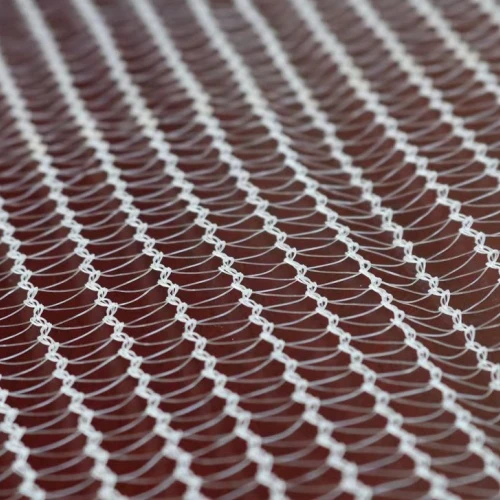-
 Afrikaans
Afrikaans -
 Albanian
Albanian -
 Amharic
Amharic -
 Arabic
Arabic -
 Armenian
Armenian -
 Azerbaijani
Azerbaijani -
 Basque
Basque -
 Belarusian
Belarusian -
 Bengali
Bengali -
 Bosnian
Bosnian -
 Bulgarian
Bulgarian -
 Catalan
Catalan -
 Cebuano
Cebuano -
 China
China -
 Corsican
Corsican -
 Croatian
Croatian -
 Czech
Czech -
 Danish
Danish -
 Dutch
Dutch -
 English
English -
 Esperanto
Esperanto -
 Estonian
Estonian -
 Finnish
Finnish -
 French
French -
 Frisian
Frisian -
 Galician
Galician -
 Georgian
Georgian -
 German
German -
 Greek
Greek -
 Gujarati
Gujarati -
 Haitian Creole
Haitian Creole -
 hausa
hausa -
 hawaiian
hawaiian -
 Hebrew
Hebrew -
 Hindi
Hindi -
 Miao
Miao -
 Hungarian
Hungarian -
 Icelandic
Icelandic -
 igbo
igbo -
 Indonesian
Indonesian -
 irish
irish -
 Italian
Italian -
 Japanese
Japanese -
 Javanese
Javanese -
 Kannada
Kannada -
 kazakh
kazakh -
 Khmer
Khmer -
 Rwandese
Rwandese -
 Korean
Korean -
 Kurdish
Kurdish -
 Kyrgyz
Kyrgyz -
 Lao
Lao -
 Latin
Latin -
 Latvian
Latvian -
 Lithuanian
Lithuanian -
 Luxembourgish
Luxembourgish -
 Macedonian
Macedonian -
 Malgashi
Malgashi -
 Malay
Malay -
 Malayalam
Malayalam -
 Maltese
Maltese -
 Maori
Maori -
 Marathi
Marathi -
 Mongolian
Mongolian -
 Myanmar
Myanmar -
 Nepali
Nepali -
 Norwegian
Norwegian -
 Norwegian
Norwegian -
 Occitan
Occitan -
 Pashto
Pashto -
 Persian
Persian -
 Polish
Polish -
 Portuguese
Portuguese -
 Punjabi
Punjabi -
 Romanian
Romanian -
 Russian
Russian -
 Samoan
Samoan -
 Scottish Gaelic
Scottish Gaelic -
 Serbian
Serbian -
 Sesotho
Sesotho -
 Shona
Shona -
 Sindhi
Sindhi -
 Sinhala
Sinhala -
 Slovak
Slovak -
 Slovenian
Slovenian -
 Somali
Somali -
 Spanish
Spanish -
 Sundanese
Sundanese -
 Swahili
Swahili -
 Swedish
Swedish -
 Tagalog
Tagalog -
 Tajik
Tajik -
 Tamil
Tamil -
 Tatar
Tatar -
 Telugu
Telugu -
 Thai
Thai -
 Turkish
Turkish -
 Turkmen
Turkmen -
 Ukrainian
Ukrainian -
 Urdu
Urdu -
 Uighur
Uighur -
 Uzbek
Uzbek -
 Vietnamese
Vietnamese -
 Welsh
Welsh -
 Bantu
Bantu -
 Yiddish
Yiddish -
 Yoruba
Yoruba -
 Zulu
Zulu
bird prevention netting
The Importance of Bird Prevention Netting in Modern Agriculture
Birds play a vital role in maintaining ecological balance, yet they can pose significant challenges to agriculture, particularly in fruit and crop production. As farmers seek to maximize yield and protect their investments, the use of bird prevention netting has emerged as an effective solution. This article explores the importance, benefits, and considerations of using bird netting in agricultural practices.
Birds are often attracted to ripe fruits, seeds, and crops, leading to substantial losses for farmers. In some cases, flocks of birds can devastate fields within a short period, resulting in both economic damage and increased labor costs to manage the problem. Traditional methods of deterring birds, such as scarecrows and noise devices, have proven to be only moderately effective. This is where bird prevention netting comes into play, offering a more reliable and humane alternative.
Bird netting is designed to physically block birds from accessing crops while allowing sunlight and rain to nourish the plants below. Made from durable materials like polyethylene or polypropylene, the netting comes in various mesh sizes, ensuring that it can exclude different bird species without hindering the growth of crops. The ease of installation and versatility make bird netting an attractive option for various agricultural settings, from small gardens to large commercial farms.
One of the primary benefits of bird netting is the protection it offers to produce. By creating a barrier between birds and crops, farmers can significantly reduce the risk of bird-related damage, leading to higher yields. This not only helps in financial terms but also reduces the stress and worry associated with potential losses. Moreover, using bird netting can minimize the need for chemical repellents, aligning with modern sustainable agriculture practices.
bird prevention netting

In addition to protecting crops, bird netting has environmental benefits. By avoiding the use of harmful substances to deter birds, it contributes to a more sustainable ecosystem. The netting is also reusable and can last several seasons, which means less waste in the long run. This aligns well with the growing demand for eco-friendly farming solutions.
However, there are considerations that farmers must keep in mind when using bird netting. Proper installation is crucial; poorly installed netting can entangle birds, leading to injury or death. It is essential to ensure that the netting is taut and securely fastened to prevent gaps. Additionally, netting should be monitored regularly for damage, as wear and tear over time can compromise its effectiveness.
Farmers should also consider the specific bird species they need to protect against, as different birds may require different netting approaches. For example, smaller birds might need finer mesh, while larger birds might require sturdier materials. Understanding local bird behavior and migration patterns can enhance the effectiveness of netting strategies.
In conclusion, bird prevention netting presents a viable solution for farmers looking to protect their crops from avian threats. By offering a combination of efficacy, sustainability, and humane treatment of wildlife, netting can play a vital role in modern agricultural practices. As the industry continues to evolve with an emphasis on environmental stewardship, bird netting stands out as a practical tool for achieving both economic and ecological success.
-
Shipping Plastic Bags for Every NeedNewsJul.24,2025
-
Safety Netting: Your Shield in ConstructionNewsJul.24,2025
-
Plastic Mesh Netting for Everyday UseNewsJul.24,2025
-
Nylon Netting for Every UseNewsJul.24,2025
-
Mesh Breeder Box for Fish TanksNewsJul.24,2025
-
Expanded Steel Mesh Offers Durable VersatilityNewsJul.24,2025











